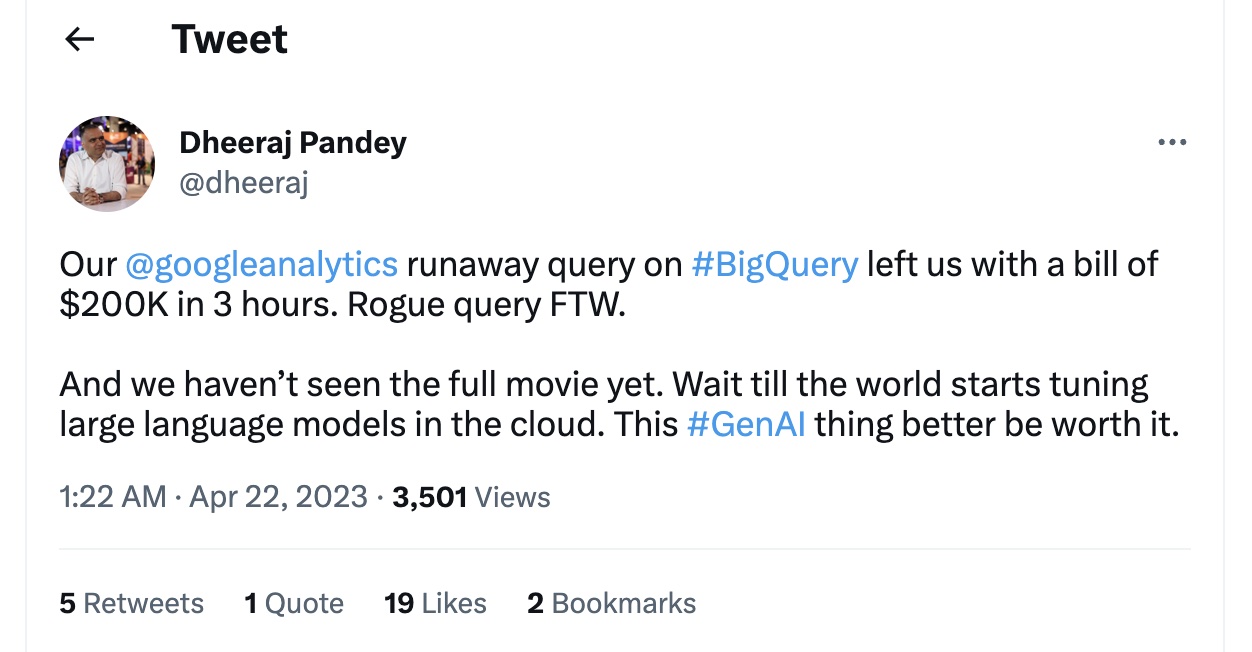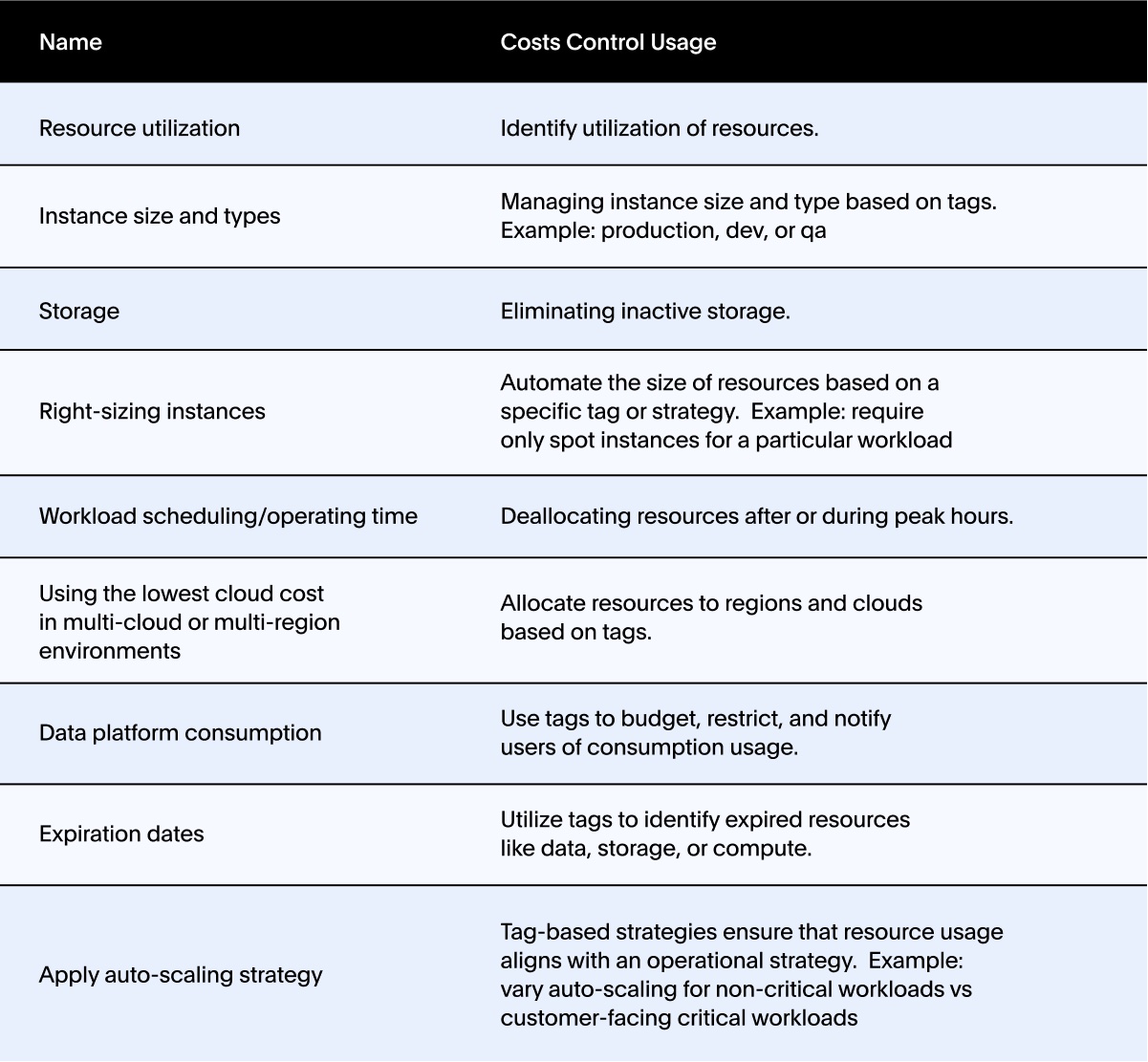It’s no surprise that cloud spending is rapidly increasing, so it’s also no surprise that controlling those rapidly increasing cloud costs is a top priority for business, technology, and data leaders. According to Gartner's July 2022 study, The Impact of Public Cloud in Accelerating Digital Business Initiatives Gartner, the use of public cloud computing has increased IT spending for most organizations (54%) over the last three years, with only 29% reporting that the cloud decreased IT spending.
In fact, this year may be the first year that managing cloud costs has overtaken security as the top issue facing organizations, according to recent IT surveys. The shift in priorities is due, at least in part, to the growing maturity of Security Operations (SecOps), plus the continued confusion over the financial impact between Capital Expense (CAPEX) accounting and Operational Expense (OPEX) accounting. Cloud cost management (CCM) is now seen as a crucial capability for every organization, big or small, that needs to drive more business value and scale its operations.
Table of contents:
CCM, often called FinOps, is the evolving cloud financial management capability and culture that enables organizations to get the most business value from their cloud spending decisions. It does this by collaborating with engineering, data, finance, and business teams to align business value and cloud spending to make optimal data-driven cloud spending decisions.
The benefits of cloud cost management
Certainly, actively managing cloud costs has numerous advantages for your organization. You’ll want to know these benefits when communicating with stakeholders or seeking executive buy-in. Let’s take a look at four of the most crucial ones.
Aligning cost with business value is the most important benefit of cloud cost management. Does cloud usage and spending enable you to meet or exceed your strategic business goals? Did your cloud costs just double? Maybe that’s okay if your revenue increased by ten times. Aligning costs to business value enables organizations to fully understand the relationship between cloud costs, value, and ultimately, the organization’s unit economics—commonly calculated using the ratio of customer lifetime value (LTV) to customer acquisition costs (CAC). Unit economics is a crucial metric leveraged in FinOps to gauge the efficiency of cloud spend and used by business leaders to maximize revenue growth, operational scale, profitability, and sustainability.

Reducing cloud expenses is often listed as the first benefit of effective cloud cost management, primarily because of the potential for significant cost savings. Those savings are usually achieved by identifying and eliminating unnecessary expenses, such as idle resources, overprovisioned services, and inefficient processes.
Optimizing resource allocation is another key benefit of cloud cost management. Effective programs optimize resource allocation, improve operational efficiency, and reduce wastage. Additionally, understanding resource allocations allows organizations to establish practices such as charge-backs, show-backs, or even in some cases, shame-backs.
Improved financial planning provides a clear view of cloud expenses and resource allocations, enabling organizations to create more accurate financial plans and forecasts. Gaining insight into cloud usage allows businesses to make well-informed choices regarding their go-to-market or overarching cloud strategies.
For example, SaaS companies' cost of goods sold (COGS) represents a large portion of their expenses. Without an effective cost management capability, COGS can be challenging to track, visualize, and optimize. This leads to inaccurate reporting of COGS, which negatively affects investor confidence, thereby robbing companies of the opportunity to invest and innovate.
By now, the importance and the benefits of an effective cloud cost management program should be evident to you. It should also be clear that many aspects of cloud cost management include monitoring and reporting, forecasting, budgeting, cost governance, utilization and efficiency, and managing commitments. In this post, we’ll focus on optimizing and reducing cloud costs. While there is not a one-size-fits-all approach to optimizing cloud costs, there are some common approaches to reducing your cloud costs.

Image from Adobe Stock.
The most common mistake I see from organizations is jumping into optimizing cloud utilization without first understanding the actual challenges. Seeing and understanding the usage and billing is the first step to optimizing your cloud costs. It’s the foundation for CCM, and every aspect of FinOps utilizes it. It’s also critical for:
Understanding trends and identifying anomalies
Communicating with stakeholders
Aligning costs with value
Setting up guardrails, budgets, and notifications
Peter Drucker famously said, “If you can't measure it, you can't manage it.” So, create your key performance indicators (KPIs), budgets, or baselines, then monitor and track them. Monitoring and tracking provide the needed insights to know whether or not your cost optimizations are having the desired impact or which factors are driving costs.

It’s also critical to anomaly detection. Has usage for a particular service shot up? Or maybe that service usage has suddenly dropped, indicating that a service is offline or not working. You’ll want to know before you get a call from the CIO or CFO asking, “What the hell is going on with our cloud spending?”
A robust tagging strategy is the foundation of every successful cloud cost management strategy, yet it’s often overlooked. It does require effort and thought planning to be effective.
When it comes to cloud computing, tags are applied to just about everything, including virtual machines, elastic computing services, database engines, storage, policies, groups, and networks, just to name a few. Of course, tagging is excellent for cost allocation and optimization. But unfortunately, most organizations don’t fully leverage the power of tags, especially when coupled with automation. Did you know tags can be used to apply specific policies to resources? Coupling tags with automation can drastically reduce your cloud spend by shutting down, pausing, or deallocating resources. Below is a table of areas where tags can be utilized.

When developing your tagging strategy, think about the following:
What minimum tags should be required on every resource? For example, the environment might have production, quality, and development values, while the line of business tag may have values of go-to-market, customer success, product, and engineering.
What tags are needed to associate resource usage with business value? These could be product names or contract numbers.
What additional tags can be used to control costs? These might include resource sizing or scheduling.
Consistent values for both tag names and tag values enable you to compare and analyze resource usage in a meaningful and consistent way.
Policy-based governance leverages policies and automation to guide how cloud resources are used within an organization. Policies help set clear rules and standards for resource allocation, usage, and management, which prevents overprovisioning, underutilization, and other inefficiencies that can drive up costs.
Public cloud service providers are hearing the complaints and concerns of customers just like you. All cloud service providers now provide tools for controlling and monitoring costs, including estimations, budgets, notifications, and auto-scaling. AWS has tools like Control Tower, Budgets, and License Manager. While Microsoft Azure has an integrated cost management service to monitor, allocate, and optimize cloud costs.
Collaborate with your teams on what the proper policies should be. Think carefully about how cloud resources are used within your organization to drive costs and usage. Now, consider which are the best policies that control cost as well as drive value. It is critically important that you focus on business value and unit costs—not just cost.
Pro Tip: Executives and business leaders don’t want or need a cost cop or a gatekeeper; they want a partner in making data-driven business decisions on cloud spending and business value.
Recall that I mentioned that we need KPIs before getting started. It’s especially true for managing your committed spend discounts. This type of discount varies widely by the cloud service provider, but they all follow the same theme; commit to a longer-term spend and receive discounts between 40-70%. That’s not awful.
Before we start, there is some simple math that you need to know when it comes to committed spending and discounts. Costs = Rate x Usage. The example below demonstrates the savings of converting an on-demand AWS EC2 instance with a rate of $0.204 per hour to a one-year committed spend rate of $0.129 per hour.

So, two primary levers for impacting costs are the usage in hours and the hourly rate. This straightforward math underpins our KPIs and our committed spending strategy. Below are some commonly used KPIs you should use to build your committed spend strategy:
Committed spend coverage is a ratio of non-discounted on-demand usage versus discounted committed spend usage. It asks, “How much of the applicable usage is covered by commitments versus running on-demand?” As you can see, uncovered spending is an opportunity for cost savings.
Committed spend utilization is the portion of your purchased commitments consumed. Unused and underutilized commitments are wastage and offset hard-earned discounts.
Dollars saved is how much you have saved over time. That’s pretty straightforward. How many on-demand hours have been converted to committed spend hours?
Commitment flexibility measures how much flexibility your organization has to reduce your commitment position when usage changes. For example, can you change resource sizing depending on increasing or decreasing demand, like needing smaller EC2 instances due to declining usage? It’s important to remember that longer-term commitments yield greater discounts but at the cost of less flexibility.
Committed spending yields more predictive costs and significant discounts. As such, they are best for steady and predictable workloads; not all meet this criterion. As such, managing your committed spending requires some thoughtful considerations. Here are a few things to consider.
Is the resource needed 24x7x365, or can it be turned off on weekends or off-hours? If so, how much usage will it have?
Is this resource a long-term service needed for 1 to 3 years?
Can the resource be shared and run multiple services, or must it be dedicated to a specific service?
Since committed spending represents a trade-off between cost and flexibility, carefully analyze your usage patterns, budget, and long-term needs before making a decision.
Pro tip: Get to know your cloud service provider’s discount programs. Programs vary by cloud provider, so understanding those nuances can save money, especially if you have multiple cloud providers.
As cloud service providers rushed to provide scalable, elastic services to attract more and more customers, cost management was not a top priority. In part because it wasn’t a top priority for customers. Today, things have changed, and customers are demanding greater visibility, better rates, and more straightforward billing. In a recent Data Chief podcast with the CPO of Tifin Wealth, Raja Musunuru, we discussed this very topic and how to manage consumption creep in a cloud-based world.
Cost visibility and governance
Cloud cost visibility and governance are two key challenges to every cost management capability. Monthly bills are complex and vary across cloud service providers. Billing rates vary by service, even within the same provider. Governance tools and policies are granular and often lack the automation needed for management at scale.
Complex pricing structures and discounts
Pricing structures vary for each cloud provider's pricing model. Not to mention that pricing can vary greatly depending on the service, instance type, region, and countless other factors. There are costs for data storage, data transfer, data platforms, API requests, and a wide range of tasks or resources. Understanding your product offerings, all of these different cost structures, and how to apply them to your specific usage patterns is extremely complex.
Billing and metering vary by service provider and resource, even with a single service provider. For example, virtual machine instances may be metered by hours, while services may be metered by the number of API calls.
Discounts can vary if you have an enterprise agreement (EA) or a negotiated agreement. There are also discounts for committed spending, as mentioned earlier. These come with trade-offs that may impact flexibility.
Managing multi-cloud environments
A multi-cloud environment greatly increases the complexity of cloud cost management. The number of options, configurations, and considerations grows exponentially with the addition of a multi-cloud approach.
In a multi-cloud environment, strategic planning and consistent monitoring are critical. Consider fully utilizing automation and cloud cost management tools. In conjunction with clearly defined governance policies, this can help you control the complexity and successfully manage costs.
Save on cost and headaches
Managing your cloud costs doesn’t have to be daunting. I’ve given you a few cost control areas to focus on, which will reduce cost, keep you on budget, and make your cost management journey a little easier. Remember these best practices:
Be transparent: make your usage and costs visible to stakeholders
Use KPIs, budgets, and guardrails
Develop a tagging strategy
Fully utilize policy-based governance
Take advantage of committed spending
So, on the next call from the CIO, she may just say, “Thank you for keeping us on budget! How did you save so much money?”
ThoughtSpot’s AI-Powered Analytics can help you visualize and monitor your cloud data metrics and KPIs, alerting you to increased spend or other anomalies hiding in your data.
Watch the video below to see how you can leverage ThoughtSpot to monitor your performance and consumption analytics on your Snowflake instance.
Schedule your one-on-one demo to see how ThoughtSpot can help you with cloud cost management.









